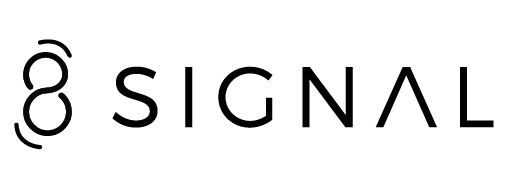Updated 2/2018
I remember my first job, sales associate at the mall. The job description was just a hair short of saying “follow the customer around and — for the love of god — sell!”
As time has passed and I’ve gained experience, I’ve learned that pushing a sale almost never works.
The key to selling is to know and express the benefit your product will offer the customer, rather than the product’s features.
Know the difference between a feature and a benefit
Features focus the spotlight on the product. Ad copy that focuses on features uses phrases like, “Our staff has decades of experience with. . .”, or “Our toilet paper is stronger and unrolls better than the competition.”
Benefits put the spotlight on the customer and the experience, positive feelings, and results they stand to gain as a result of using the product or service.
That means (back at the mall) I shouldn’t have been pitching the ceramic plates on the hair straightener. I should have focused on the glamour and confidence a customer would feel after using it — and the time it would save them on rushed mornings.
Really know your products and services
Benjamin Franklin said it:
“An investment in knowledge pays the best interest.”
Understanding the features of your product or service will allow you to present the benefits accurately and persuasively.
That’s something else I learned at the mall — customers respond to eager sales staff who show passion and knowledge about the products and willingness to share the benefits that come along with it. Guess who got salesman of the month more than one!
Think like a customer
When it comes to spending money, everyone asks (either consciously or unconsciously):
“What’s in it for me?”
You’ve got to remember the whole reason customers show an interest in your business is because they have a need to be met or a problem to be solved.
Benefits clearly answer the question “What’s in it for me?”
Find even the most basic features and characteristics that make your product or service unique, and put yourself in your ideal client’s shoes. How do these features improve this client’s life?
A feature is just a fact, but the benefits improve people’s lives.
Remember: It’s not the steak, it’s the sizzle
Recently, I ate with friends at The Texas Roadhouse. I was stuck on the menu — everything looked so good. What should I choose? The waiter tapped the pen on his notepad. Ribs, brisket, chicken? How could I possibly choose? When suddenly that noise! The sizzle!
Every eye in the room shot toward the swinging doors that hid the kitchen. And all eyes followed that It felt like every head in the room shot up and looked towards the swinging doors that hid the kitchen. And all eyes followed that glorious, noisy dish as its smoky smell filled the air.
My senses made the decision easy for me:
“I’ll have what they’re having.”
You’re not selling a “steak,” you’re selling the experience, the taste, the “sizzle” . . . the benefits.
Focus on feelings and finances
As you write a benefit statement, think of this: the most compelling benefits are the ones that provide an emotional or financial return.
Emotional returns are meant to make the customer feel something. Building an emotional connection with your customer is powerful advertising. Financial returns generally save or make money for the customer.
Your product or service has to deliver emotional or financial solutions and satisfy those corresponding needs (we call this a “job to be done”), or it won’t be successful.
A trick to create benefits statements
When writing benefit statements, think about the feature and say: “which means that you can …” and proceed to describe how it will benefit people’s lives. For example:
Feature: “Our consultants are knowledgeable and experienced …”
Which means that you can:
Benefit: “… rest assured that you have a committed and professional team behind you to see your projects all the way through.”
The benefit sentence pushes you past the feature to reveal the real value to your customers. They don’t care much about the facts if they aren’t tied to benefits.
Top 5 keys for crafting a benefit statement
Benefit statements outline a future state in which the need or problem of a customer has been resolved. Keep in mind these five keys when creating a benefit statement:
- Keep it short and to the point. Using more words than absolutely necessary or speaking in an unnatural tone usually means that you’re having trouble expressing the benefit. So keep your benefit statements concise.
- Make your benefits measurable. Customers often ignore (and easily forget) vague statements. Benefits that are solid and specific are more convincing, and they embed themselves into the mind of the customer. For example, instead of a vague statement like, “Greatly increase your return on investments,” try, “Our customers report at least a 25% increase in their returns on investments.”
- Describe an ideal future state, but be realistic. You don’t want to make your customers feel betrayed by empty promises.
- Hone in on what you’re really selling. Say it clearly. Imagine going into the hardware store to buy a padlock. Chances are you don’t care about the color of the lock, or a numbered key — you may not even care about the price. You want a lock that keeps your belongings and your family safe. That’s where the benefit statement should be focused.
- Emphasize your competitive advantages. You could be selling something that hundreds of competitors have. Use benefits that differentiate you and help you stand out from the competition.
If you want to put a little more sparkle into your benefit statements, or you’d like to learn how benefit statements work best on social media, drop us a line.
Click here or give us a call at (915) 585-1919 to set up your free 2-hour consultation.
We look forward to helping you reach your customers without having to chase them around the mall.





